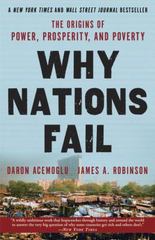Question
Question 1. [Utility Maximization and Choice] Tom's utility on two goods, and , is presented as below. utility = (, ) = a) ( 10
Question 1. [Utility Maximization and Choice]
Tom's utility on two goods, and , is presented as below. utility = (, ) =
a) (10 points) If x costs $1 each and y costs $2 each, determine his utility-maximizing consumption quantities for and , assuming he is spending all his money endowment of $10.
b) (10 points) Suppose x price drops to $0.5. How much money can Tom save if he adjusts his consumption quantities of and such that he remains at the same level of utility he received in part a)?
Question 2. [Utility Maximization and Cross Price Effects]
Suppose the utility function for goods and is given by utility = (,) = +
a) (10 points) Calculate the uncompensated (Marshallian) demand functions for and , and explain how (= ) or other good's price would affect the demand for and .
b) (10 points) Calculate the indirect utility function and the expenditure function for and .
c) (10 points) Calculate the compensated (Hicksian) demand functions for and using the expenditure function from b) above and Shephard's lemma, and explain the effects of income or other good's price on the demand for and .
Question 3. [Lump Sum Principle]
Suppose we use fixed proportions utility function with their optimal quantity choices as below. utility = (, ) = min(, 2),
= = + 0.5 2 +
a) (5 points) Suppose = $1, = $2 and (= ) = $10. Calculate the indirect utility in this case.
b) (5 points) Now a tax of $1 is levied on good x. Calculate the indirect utility after tax, and the tax collection amount.
c) (5 points) Show that the lump sum income tax of the same tax collection amount from b) leaves the utility level the same as in b).
d) (5 points) Explain why the after-tax utility is the same under both the excise tax and the lump sum income tax in this utility function case.
Question 4. [Costs - Short Run vs Long Run]
Following is a firm's production function for soccer balls: = 1,
where 1 is the fixed amount of (capital equipment) in the short run, and is the amount of labor.
a) (10 points) Calculate the firm's short-run total costs as a function of , , and 1 (where = unit
capital price; = unit labor price)
b) (10 points) Given , , and , how should the capital stock be chosen to minimize short-run total
cost?
c) (5 points) Using your answer from b) above, calculate the long-run total cost of soccer ball production.
d) (5 points) For =$1, =$4, and 1=100, at what level of is short-run cost function tangent to the long-run cost function?
Step by Step Solution
There are 3 Steps involved in it
Step: 1

Get Instant Access to Expert-Tailored Solutions
See step-by-step solutions with expert insights and AI powered tools for academic success
Step: 2

Step: 3

Ace Your Homework with AI
Get the answers you need in no time with our AI-driven, step-by-step assistance
Get Started


